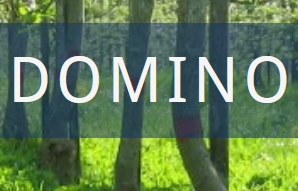Crop protection and soil management, including fertilization and weed control, require high inputs in intensive organic fruit orchards, thus leading to increasing costs and undesired ecological impacts. On the other hand, the reduction of inputs might threaten crop production and quality. Having this in mind, the project “DOMINO” has been carried out to improve the long-term sustainability and the ecological foot print of intensive organic fruit orchards by introducing the use of “dynamic” living mulch species as an agroecological approach in the management of the row and inter-row soil.
Indeed, the objective of soil orchard management in organic tree fruit production is to create the best conditions for tree growth and production through increased soil fertility while suppressing weeds and minimize the impact from pests and diseases. The selection of the living mulch species has a significant effect on weed management, soil fertility, tree performance and biodiversity and farmers can have various options for choosing mulch species, including grasses, legumes or other broadleaf plants. However, the use of dynamic “living mulches”, composed of different species having multiple functions, in the row is an innovative approach that has been successfully tested in DOMINO.
The goal of growing living mulches on the tree row included the possibility to have a secondary source of income for the farmer (e.g. growing medicinal plants) or increasing ecological services (e.g. additional feed for pollinators, soil bioremediation from persistent organic pollutants – POPs, increase the control of soil-borne or air-borne pests and pathogens of the apple crop).
The assessment of the suitability of the various species of living mulches planted in the tree row included the analysis of their impact on soil biodiversity (bacteria, fungi and nematodes) and the evaluation of their effect on above-ground biodiversity and pests’ occurrence. Besides increasing orchard biodiversity, resource use efficiency and improving ecosystem services, the solutions tested in the project have led to the design of mixed orchard systems more resilient to climatic and socio-economic challenges.
More interesting for farmers, the new management practices have been shown to have the potential to increase the farmers income, when introducing a living mulch that can become a secondary cash crop. The mixed production system is a new method to tackle current critical issues of organic fruit growers: economic sustainability of the crop, certification-related issues, ecosystem services. With regard to the economic sustainability, the opportunity of an economic return from an additional minor crop destined to specific niche productions (e.g. officinal herbs or functional food) has a potential broadly untapped yet. Additionally, the ecosystem services that such orchard management methods (e.g. increased biodiversity), could provide is a further opportunity of interest for the farmers. The estimation of economic externalities, i.e. not-marketable (valuable) benefits, derived from the introduction of the new methods should provide data to support the definition of subsidies for the organic sector as well as to increase the awareness of the social benefits of organic farming.
Moving towards more sustainable, agroecological management techniques, also in organic orchards, implies the possibilities of enhancing multiple ecosystem services by maintaining fruit trees and herbaceous community together. It is expected that the establishment of the solutions proposed by the project will cause a positive “domino” effect on biodiversity, better fruit quality and overall sustainability of the cropping systems. Such technical solutions would introduce the concept of vertical production, with the exploitation of different layers of the orchard above and below ground, in contrast with the current monoculture.
More information (in the six languages of the project) can be found on here.












